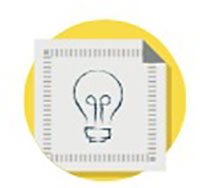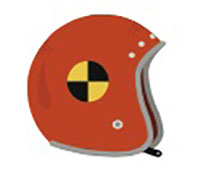As entrepreneurs, our deep passion to solve real problems drives us in our quest to revolutionize the way things were done before. We often get really excited about our “big idea” and jump straight into developing it. We grab a Business Model Canvas , flesh out the perfect model, rush into interviewing customers, then start building the product, hiring new team members and so on.
However, we need to call attention to the fact that by jumping straight into developing our business idea, we lose the opportunity to explore better options. Your first business model might do the job, but it’s likely there is a much better alternative out there—a superior business model that will strengthen your venture, create more value for customers and generate greater revenues. The business model you’ll choose can become a powerful competitive advantage and has a substantial effect on the success of your venture. If you really want to stay in the game for the long-term, take the time to look at the vast array of possible options before narrowing down on the business model that’ll make your venture stand out.
How can you find a business model that’ll strengthen your venture and pave the way to success? We recommend using ‘prototyping’, a technique used by designers and architects, as an approach to identify promising possibilities. Prototyping in the context of business models is about exploring a wide range of alternatives and then narrowing down to the most compelling model ideas. By prototyping as many alternatives as possible in little time, you minimize the risk of wasting resources on an inferior business model. The Business Model Canvas is here to help you transform your ideas into tangible prototypes.
Apply these 4 essential prototyping principles to maximize your chances of finding the best business model for your venture:

1. Don’t get stuck in endless blah, blah, blah. Sketching your ideas on Business Model Canvases will help guide your team conversations. Prototyping is all about creating many tangible and rough models that you can reflect on with your peers and customers.

2. Sketch your Business Model Canvases quickly and cheaply. At this stage, you don’t know which idea will work and many of your prototypes will end up in the trash. If you are quick at exploring new ideas, you’ll maximise the chances of rapidly finding the right business model.

3.Get over the myth of the “creative genius”. Great business model ideas rarely happen over ‘ah-ha’ moments, but are the results of several prototype iterations and continuous adjustments. There is no pressure to come up with a perfect idea, so don’t block yourself and just get started.

4.Run away from predictable business models. You won’t break the status quo by slightly adapting a business model that already exists. Use provoking questions to challenge your thinking and come up with radically new business model ideas (e.g. what if you couldn’t charge for your product? how could you get people to work for your for free?).
But that’s not it! Once you’ve found the right business model, one that creates a competitive advantage for your venture, it is time to test it on the field! Find out more about testing in our next video of the series ‘From Idea To Business’.
Nabila Amarsy is a writer and business model tool builder for Strategyzer.